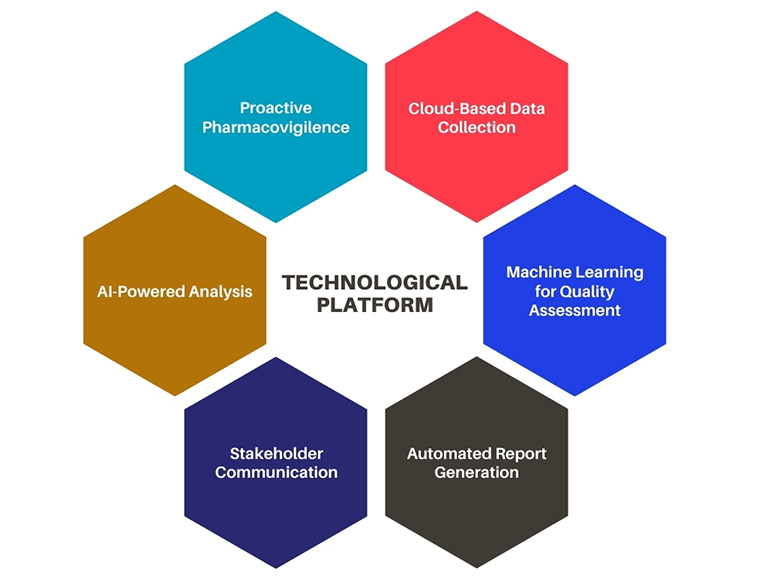At a Glance
- $5.5 – $12.6 trillion: The estimated dollar impact on the world economy from the Industrial Internet of Things by 2030
- 26%: The impact of IoT in manufacturing, hospitals, and other areas
- 10 – 14%: The impact of IoT in human health-related companies
- 55%, down from 61% in 2020: The economic value potential of the developed world
Source: McKinsey Digital
IoT in Production
The Internet of Things is continuing to have a growing impact on all industries, including the production of medicines and other pharmaceuticals.
“The IoT enables devices to connect and exchange data. The IoT connects assets to processes, systems, and people in manufacturing. This enables better integration of plant processes, achieving higher productivity levels and taking manufacturing to the next level of transformation, Industry 4.0,” a blog post from IBM states.
“IoT for manufacturing can harness the data from machines and equipment to transform the processes and systems of the modern factory environment. By denying or ignoring the transformation that the IoT (internet of things) will inevitably bring, manufacturers risk falling behind competitors and losing clients that value speed and innovation,”
Today, the world is in the midst of the fourth Industrial Revolution following 1783’s use of water power and steam, 1870’s introduction of electricity and the 1960’s switch from analog to digital technology.
Industry 4.0 embraces cognitive manufacturing using a combination of connected sensors, big data, predictive analysis and robotics. With the industrial internet of things (IIoT) on the rise, human workers are moving away from repetitive, mundane tasks. Instead of people dipping thermometers into vats or manually counting products, sensors can monitor temperatures in real time. Barcode labels attached to everything from individual packages to pallets let handheld devices identify the contents and where they belong.
This information flows from sensors to device controllers for each machine. Each controller sends information into a plant’s internal computer network. From there, it’s passed into individual workstations that can be anywhere in the world.
Digital Controllers for IoT
Walk into any production plant anywhere in the world and regardless of what the plant produces, changes are high you’ll see controllers made by Siemens.
“Siemens is a pioneer in framework and energy arrangements, just as computerization and programming for the Industrial Control And Factory Automation Market. Being one of the world’s greatest makers of energy-effective, asset sparing advancements, this organization gives research center diagnostics, clinical imaging hardware, and clinical IT solutions,” Verified Market Research states.
VMR lists Siemens of Germany at the top of its seven industrial control and factory automation companies. The others are ABB of Sweden, Emerson Process Management of the U.S., Rockwell Automation of the U.S., Schneider Electric headquartered in France, Honeywell of the U.S. and Mitsubishi Electric of Japan.
Siemens markets the SIMATIC IOT ® gateways, which make it easy to, “implement forward-looking production concepts in your existing plant with SIMATIC IOT gateways – they’re open, versatile, and retrofittable,” the company states.
One of Siemen’s products is a controller aimed at cloud computing: the SIMATIC Cloud Connect 7. These types of controllers help companies with far-flung operations in multiple countries share information in real-time, letting workers know what’s going on in a machine a continent away. Industrial manufacturers sending this information through the Microsoft Azure cloud computing platform can easily access data from—or send commands to—devices using these controllers.
Siemens’ industrial robots “help manufacturers grow and develop new applications that were once unfeasible with previous robotics technology.” Combining different Siemens controllers and robots is one way small and medium businesses can boost their production and efficiency. By automating formerly repetitive steps, companies can run production lines longer with reduced errors. Fewer human interaction is required, allowing production runs without anyone in the building.
Information from these controllers produces what’s commonly referred to as “big data.” Terabytes of data can be routed through machine controllers into your network from individual sensors. Unfortunately, this information is almost worthless if you can’t make it work for you.
Figure: 1IoT Enterprise Spending Forecast
IoT Data
When it comes to IoT data, Enterprise Resource Planning (ERP) software is the next logical step in the flow of information. ERPs are designed to organize the data sent through your controllers and present it in useable forms such as graphical dashboards and reports.
“ERP systems bridge information gaps across different departments within a business allowing managers to see a more holistic view of a company’s finances and critical issues. With easy access to all company processes and data, managers can make quick and informed decisions to improve the productivity of the business,” according to Omniaccounts.
One important ERP feature is resource allocation. Modern sensors and controllers might be able to tell you what each machine is doing, but not which sequence of machines is most efficient. That’s where your ERP comes in.
Omniaccounts states “When ERP systems are implemented correctly across a business, they transform the financial, operational, and human resource aspects of an organization. Companies at the forefront of innovation are implementing ERP software to improve the way data is shared across an organization, reduce internal costs, increase efficiency, and improve processes across their organizations. An ERP system fits in with any industry, be it retail, corporate, industrial, and even small businesses, assisting with the day-to-day operations of the company and the ever-changing industry needs.”
Effective ERP
Picking the right ERP for your business can make a big difference in functionality. Among the many benefits of modern ERP for manufacturing is improving supply chain efficiency by helping track raw materials from the supplier to your warehouse. Once the essential items arrive, an ERP designed with labeling makes it easy to efficiently store, trace and track products throughout production and on to customers.
The right ERP also boosts production by enabling more efficient resource allocation.
Imagine your factory is running a dozen different jobs and one of the orders is smaller than normal. When that job completes, the ERP can indicate that a machine is available. The remaining time can then be used for preventive maintenance, to run a low-volume order for one customer, or increase production for another.
On top of resource allocation, especially with IoT data, an ERP with predictive analysis helps companies.
- It lets you know when a part is showing wear so you can replace it before having to shut down a production line
- It helps predict where new markets will emerge through evaluating business intelligence
- Supply chain information, coupled with business intelligence, can predict where the next Suez Canal-type fiasco might occur, giving you the option to route your shipments through other ports
Get a consultation to discover more about Embracing IoT powered applications.
ERPs and Pharmaceutical
Today’s modern ERPs are a great way to boost the business of any small, medium or large business. ERP Research lists six ERP software makers whose products are especially good for pharmaceutical companies.
“Many pharmaceutical companies are exploring Microsoft Dynamics as their pharmaceutical ERP. The solution provides great flexibility plus a large partner ecosystem that has developed many pharmaceutical industry add-ons,” ERP Research states.
An important advantage of using Microsoft Dynamics 365 products is the company’s focus on security. Using Azure, Microsoft’s cloud computing platform provides an additional layer of data security as propriety information travels from one company site to another.
Labeling solutions that can print either barcodes or QR codes lets pharmaceutical companies embed any and every piece of required information in each label. A scan of an individual product’s label can then provide all data required in order to meet the regulations of each country or state that item moves through after leaving the factory. Even safety data sheet (SDS) information and instructions can be embedded in a label, quickly and easily.
Final Thoughts
IoT in the pharmaceutical industry is sure to be a defining factor as more use cases develop. Any company wanting to take advantage of modern technology and move to Industry 4.0 need to look at investing in at least three types of products:
- 1.IoT sensors to gather information at the machine level
- 2.Controllers to guide that data into your network
- 3.A modern, efficient and scalable Enterprise Resource Planning tool like Microsoft Dynamics 365 to turn that data into information for helping your company run more efficiently and profitably.
This combination gives your company an edge over competitors locked into older products and programs. Is your business IoT ready?






















